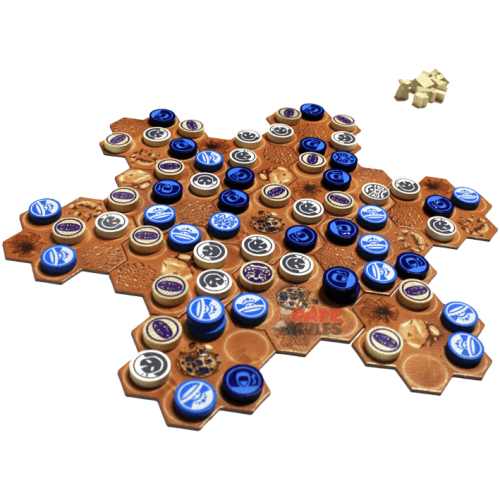
On the downside, it means that some superpowers are missing, for example, Intangibility or Stretching. Although limited, this flexibility is present in each of the eight Archetypes, giving some variety to the twenty-four Power Suites given. These are only approximates, but select Martial Artist and then the Athletics and Larceny skill packages, the Defensive, Shadow, and Squirrely Advantage packages and a player or a Game Master has a Ninja character. So working backwards from the Power Suites for the Crimefighter and the Martial Artist might be a character like Ironfist, the Detective a masked vigilante like Batman or The Question, the Archer a hero like Hawkeye or Green Arrow, and so. The result of the hero creation process is not to create something that is necessarily fresh or original, but rather build variations upon the familiar. Lastly, a player can adjust his hero to make him more fun to play, swapping Skill Ranks, Advantages, and so on. Penultimately, a player selects two or three Complications, one of which has to be a Motivation, Complications earning a hero a Hero Point when they come into play. In the case of the Crimefighter Archetype these are Archer, Detective, and Martial Artist. Next, the player chooses a Power Suite, essentially his hero’s superpowers, from the three given.

For example, Fortunate gives Connected and Luck, whilst Shadow grants Hide in Plain Sight and Skill Mastery (Stealth). Similarly, a hero is automatically given several Advantages, but his player selects two or three keywords-depending upon the archetype-each of which grants two further Advantages. A hero is automatically given some skills, but five or six areas of study provide the hero with further skills, for example, Academics gives Perception 8, Technology 8, and Treatment 4, whilst Investigation provides Expertise (Streetwise) 4, Insight 5, Investigation 6, and Perception 5. So a Crimefighter would be Brooding, Clever, or Observant, a player selecting just one. Each archetype provides a hero with his Ability Ranks, modified by the archetype type, of which three are given. There are eight given: Crimefighter, Energy Controller, Gadgeteer, Mystic, Paragon, Powerhouse, Primal, and Speedster. The first choice a player makes is his hero’s archetype. Instead, the process for creating a hero-and thus a villain-is done by selecting options in an ‘identikit’ fashion to build a character. The players can create their heroes and they can get roleplaying with fairly quickly and the Game Master can create villains-or use the ones in the book-as quickly and run the adventures in the book, but what neither the players nor the Game Master can do is create characters from scratch, from first principles.

Now the Basic Hero’s Handbook is a complete roleplaying game and a complete superhero roleplaying game, but it is incomplete. The Basic Hero’s Handbook is designed as an introduction to Mutants & Masterminds, streamlining the mechanics, simplifying character creation, and providing the Game Master with a handful of adventures, decent advice, and a half dozen adversaries, all ready to run. There is room, of course, for it to be tweaked to fit other genres and comic book ages, and over the years, such as Golden Age and Iron Age, as well as setting supplements like Freedom City and Wild Cards. Published by Green Ronin Publishing and now in its third edition, it is grounded in the Four Colour subgenre and Silver Age of superhero comics, so that its tone is positive and uplifting with some wackiness and weirdness thrown in. Originally published in 2002, Mutants & Masterminds is one of the few roleplaying games and the only superhero roleplaying game to survive the d20 System boom of the first decade of the new millenium.


 0 kommentar(er)
0 kommentar(er)
